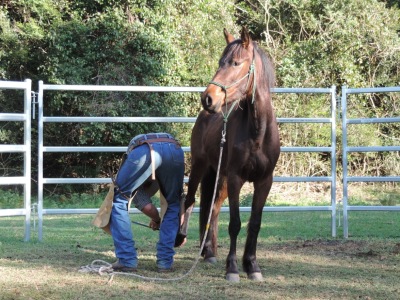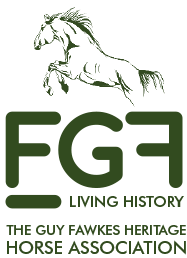There are a lot of misconceptions and myths in the public arena about Australian wild horses, commonly called ‘brumbies’. This is a generic name which colloquially covers all the different breeds and types of wild horses which formed the foundation of many modern breeds including Australian Stock Horses.
If you are interested in the history of horses in Australia, and the future of Australia’s wild horse populations, we invite you to read through our FAQ’s and enrich your knowledge and understanding of these wonderful horses . . . Australia’s living history.
Here are our most FAQs
Click on the + sign to read the answers
There are several organisations that register wild horses, what makes your Association and your horses different?
There is a significant difference between our Heritage Horses and Brumbies found elsewhere in Australia. The horses of The Guy Fawkes River National Park have been subjected to numerous studies, comprehensive research and DNA testing to prove that they are direct descendants of those horses bred for the Light Horse Brigade in WWI and they share the same history as the Waler. In fact, the Heritage Horses are closer to the original ‘Walers’ than the modern Waler breed.
Guy Fawkes Heritage Horses have significant heritage value, locally, nationally and internationally. The horses from this area are the ONLY group of Australian wild horses to have been subjected to this rigorous process – their links to Australian history and the Waler horse are proven.
The GFHHA is not a Brumby Rescue Organisation. We do not pick and choose small numbers of brumbies for re-homing. We take possession of ALL horses removed from the National Park and assess and re-home them appropriately.
The GFHHA only recognises and registers Heritage Horses that are removed from the Guy Fawkes River National Park through the passive capture and removal program run by National parks & Wildlife, and the progeny of these horses. We believe that by only registering these horses we are able to maintain and preserve the unique qualities these horses are famous for – their authentic heritage value and genetic superiority.
Do wild horses have poor conformation?
Guy Fawkes Horses generally have good – excellent conformation. They were bred to be solid and sturdy with strong hooves and limbs, sound of wind, with excellent stamina and even temperament.
This foundation, and the rugged environment these horses survive and thrive in, has served to maintain and enhance these natural characteristics. They thrive in the steep, rocky and dense bush of GFRNP. They are hardy, dependable, quick witted and nimble footed.
Natural selection has determined that the strong survive and the weak do not, allowing the continued improvement of stock.
A wonderful example of just how well confirmed these horses are is GF Clyde (see pics) who, at his first show, unwashed, unclipped and with just a quick run over with a curry comb was a real contender for the Supreme Led Horse Exhibit at Bellingen Show in 2006, one of the judges later told us that he only narrowly missed out on the sash!
I've heard wild horses are unhealthy and infested with parasites . . .
Wild horses instinctively know what they need in terms of roughage, minerals, salt etc and will forage for it. To enable them to source such a range of nutritional requirements, wild horses travel a great deal, their home territory extending up to 40 kilometres end to end. For this reason, wild horses have a lower worm burden than many domestic horses because they are not confined to one parasite infected area.
Aren't wild horses inbred?
DNA testing of Heritage Horse groups has proven that the percentage of inbreeding is far less than the percentages found in Thoroughbred and Arabian horse breeding programs. Natural herd behaviour is a key factor in keeping inbreeding to a minimum. In addition, the huge expanse of the Guy Fawkes River National Park and the number of horses within it, contributes to the low percentage of inbreeding – less than 5%.
How big are Guy Fawkes Heritage Horses and what colours are they?
The average height is around 14.1hh but our horses generally range from 13 – 15.2hh.
Guy Fawkes horses can be seen in most colours except Appaloosa. Bays, browns and chestnuts are the most common, this being the strongest genetic phenotype. Palominos and buckskins are also common as are the double dilutes, Cremello and Perlino. Pinto, grey and taffy are uncommon.
Which disciplines are Heritage Horses suitable for?
Heritage Horses can excel in all equestrian disciplines given the correct training.
It is becoming more common to see Heritage Horses competing in all horse sports, attending Pony Club and hacking up the trails. Heritage Horses make competitive endurance horses due to their natural hardiness, weight carrying ability and stamina. A Guy Fawkes Heritage Horse is an obvious choice for this sport and Heritage Horses have been exported to the United Arab Emirates (UAE) to compete in the desert.
It is becoming widely accepted that because of their naturally quiet and kind natures, Heritage Horses make excellent Pony Club mounts and can be seen competing in all events from sporting and camp drafting to dressage and showjumping. Many Agricultural Shows now accommodate Heritage Horse classes in their horse programs enabling Heritage Horses to be shown at halter and under saddle.
Can I come and see the horses?
Of course! Visitors are always welcome to come and view our horses at our holding block near Guyra, NSW. Please call ahead to make an appointment so we can draft horses in for you to view.
Our Open Days are also a great way to see our horses and what they have to offer and usually feature demonstrations using gentle horsemanship as well as current horses for sale. Check out our next Open Days here.
Who funds your Association?
Lovely Australians who care about the future of these horses and their rich history, so intertwined with ours.
We do not receive any Government funding. All monies raised by the GFHHA are obtained via horse sales, donations and fund raising efforts. We are staffed only by volunteers, who are much appreciated.
As any horse owner will know, horses cost a lot! We pay for their transport, worming, hay etc. As well as travelling with horses to shows, educational information, rehabilitation, handling etc.
We therefore appreciate any donations and we have a number of different items available for purchase so you can spread the word about the horses, their history, and future out of the National Park



